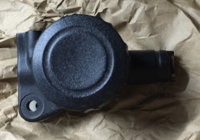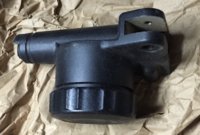wingman1946
1978 XS 650e
Good picture. I have three different books (including a factory shop manual) and still did not have a picture where I could really distinguish the parts. Thanks for a clear picture.Trying to rebuild my 78 Special master cylinder today...
I have the MikeXS rebuild kit but I am not sure of the sequence and all I have is the crappy Haynes manual.
Here is how I think it goes back together.

But what is that rubber seal for at the top? The parts diagram in the Haynes manual shows two additional pieces that were not included in my kit.
Here is the mess I started with:




